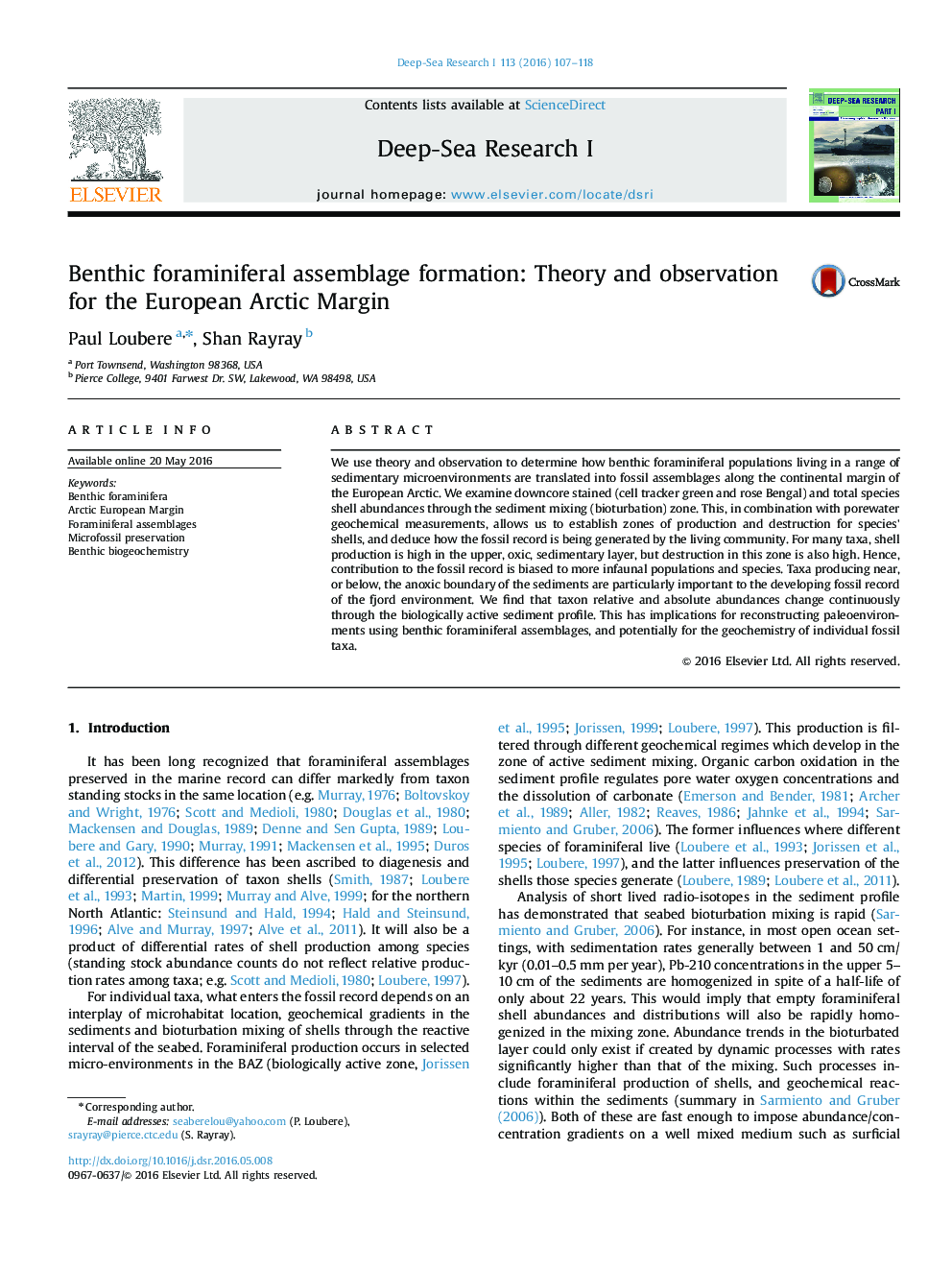| Article ID | Journal | Published Year | Pages | File Type |
|---|---|---|---|---|
| 6383373 | Deep Sea Research Part I: Oceanographic Research Papers | 2016 | 12 Pages |
Abstract
We use theory and observation to determine how benthic foraminiferal populations living in a range of sedimentary microenvironments are translated into fossil assemblages along the continental margin of the European Arctic. We examine downcore stained (cell tracker green and rose Bengal) and total species shell abundances through the sediment mixing (bioturbation) zone. This, in combination with porewater geochemical measurements, allows us to establish zones of production and destruction for species' shells, and deduce how the fossil record is being generated by the living community. For many taxa, shell production is high in the upper, oxic, sedimentary layer, but destruction in this zone is also high. Hence, contribution to the fossil record is biased to more infaunal populations and species. Taxa producing near, or below, the anoxic boundary of the sediments are particularly important to the developing fossil record of the fjord environment. We find that taxon relative and absolute abundances change continuously through the biologically active sediment profile. This has implications for reconstructing paleoenvironments using benthic foraminiferal assemblages, and potentially for the geochemistry of individual fossil taxa.
Related Topics
Physical Sciences and Engineering
Earth and Planetary Sciences
Geology
Authors
Paul Loubere, Shan Rayray,
